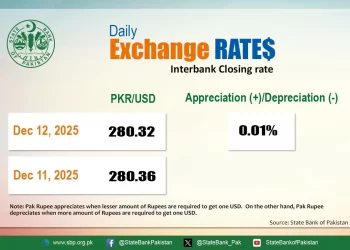The Federal Reserve gave home shoppers what they hoped for this week: a big rate cut and a signal of more cuts to come.
Even so, aspiring homebuyers and homeowners eager to refinance should temper their expectations of a big drop in mortgage rates from here.
While the Fed doesn’t set mortgage rates, its policy pivot does clear a path for mortgage rates to go lower. But in this case, the Fed’s action was widely anticipated, so rates moved lower well before the cut was even announced.
“We’ve seen the bulk of the easing that we’re going to get already this year,” said Danielle Hale, chief economist at Realtor.com. “I wouldn’t be entirely surprised if mortgage rates ticked up a bit from here before declining again.”
When mortgage rates rise, they can add hundreds of dollars a month in costs for borrowers. The average rate on a 30-year mortgage rose from below 3% in September 2021 to a 23-year high of 7.8% last October. That coincided with the Fed jacking up its benchmark interest rate to fight inflation.
Rates have been mostly declining since July in anticipation of a Fed rate cut. The average rate on a 30-year mortgage is now 6.09%, according to mortgage buyer Freddie Mac. That’s down from 7.22% in May, its peak so far this year.
Even a modest drop in mortgage rates can translate into significant savings over the long run. For a home listed at last month’s median U.S. sales price of $416,700, a buyer in Los Angeles who makes a 20% down payment at the current average mortgage rate would save about $312 a month compared to the cost of buying the same home in May.
While lower rates give home shoppers more purchasing power, a mortgage around 6% is still not low enough for many Americans struggling to afford a home. That’s mostly because home prices have soared 49% over the past five years, roughly double the growth in wages. They remain near record highs, propped up by a shortage of homes in many markets.
Mortgage rates would have to drop back to near rock-bottom lows from three years ago, or home prices would have to fall sharply for many buyers to afford a home. Neither scenario is likely to happen any time soon.
Economists and mortgage industry executives expect mortgage rates to remain near their current levels, at least this year. Fannie Mae this week projected the rate on a 30-year mortgage will average 6.2% in the October-December quarter and decline to an average of 5.7% in the same quarter next year. It averaged 7.3% in the same period in 2023.
Mortgage rates are influenced by several factors, including how the bond market reacts to the Fed’s interest rate decisions. That can move the trajectory of the 10-year Treasury yield, which lenders use as a guide to pricing home loans.
“Ultimately, the pace of mortgage and Fed rate declines will be dictated by economic data,” said Rob Cook, vice president at Discover Home Loans. “If future data shows that the economy is slowing more than expected, it would increase pressure for the Fed to take more aggressive action with rate cuts which would likely translate into lower mortgage rates available to consumers.”
Sales of previously occupied U.S. homes have been in a deep slump dating back to 2022, and fell 2.5% last month. So far, the pullback in mortgage rates has yet to spur a meaningful rebound, although sales did rise slightly in July.
The muted outlook for mortgage rates leaves prospective buyers and sellers with a familiar dilemma: Test the housing market now or hold out for potentially lower rates.
Nick Young, an attorney who moved his family this year from Phoenix to Evergreen, Colorado, has opted to rent after seeing how competitive the homebuying market was last spring.
With a homebuying budget between $1 million and $1.5 million, he and his wife are still searching for that perfect gem — a house with five bedrooms to grow in with their three kids.
They’re watching mortgage rates, but also other variables, including inflation, the health of the economy overall, and the presidential election.
“There’s not a ton of incentive to buy currently,” Young said before the Fed announcement. “But timing the market is a fool’s errand.”
Real estate agents from Phoenix to Tampa, Florida, say many home shoppers are waiting for mortgage rates to fall below 6%. Some are hoping rates can return to the lows of three years ago.
“What I try to do is bring them back to reality,” said Mike Opyd, a broker with Re/Max Premier in Chicago. “I tell them, ’if you’re serious about buying, get in now.”









